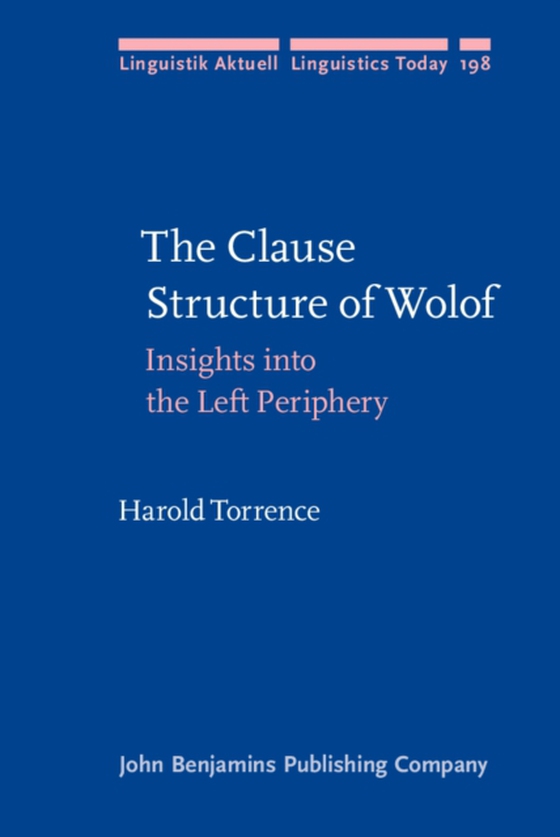
Clause Structure of Wolof e-bog
802,25 DKK
(inkl. moms 1002,81 DKK)
This volume investigates the clausal syntax of Wolof, an understudied Atlantic language of Senegal. The goals of the work are descriptive, analytical, and comparative, with a focus on the structure of the left periphery and left peripheral phenomena. The book includes detailed examination of the morpho‑syntax of wh‑questions, successive cyclicity, subject marking, relative clauses, ...
E-bog
802,25 DKK
Udgivet
29 januar 2013
Længde
303 sider
Genrer
Grammar, syntax and morphology
Sprog
English
Format
pdf
Beskyttelse
LCP
ISBN
9789027273017
This volume investigates the clausal syntax of Wolof, an understudied Atlantic language of Senegal. The goals of the work are descriptive, analytical, and comparative, with a focus on the structure of the left periphery and left peripheral phenomena. The book includes detailed examination of the morpho‑syntax of wh‑questions, successive cyclicity, subject marking, relative clauses, topic/focus articulation, and complementizer agreement. Novel data from Wolof is used to evaluate and extend theoretical proposals concerning the structure of the Complementizer Phrase (CP) and Tense Phrase (TP). It is argued that Wolof provides evidence for the promotion analysis of relative clauses, an "e;exploded"e; CP and TP, and for analyses that treat relative clauses as composed of a determiner with a CP complement. It is further argued that Wolof has a set of silent wh‑expressions and these are compared to superficially similar constructions in colloquial German, Bavarian, Dutch, and Norwegian. The book also presents a comparison of complementizer agreement across a number of related and unrelated languages. Data from Indo‑European (Germanic varieties, French, Irish), Niger‑Congo (Atlantic, Bantu, Gur), and Semitic (Arabic) languages put the Wolof phenomena in a larger typological context by showing the range of variation in complementizer agreement systems.
 Dansk
Dansk

